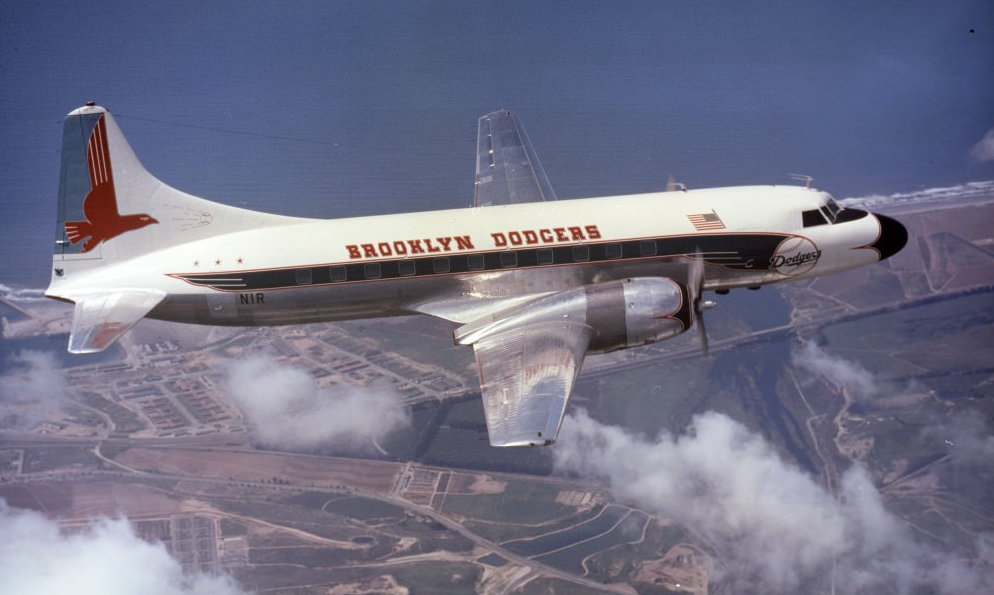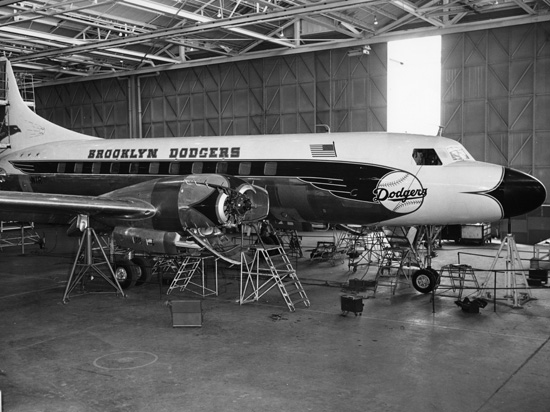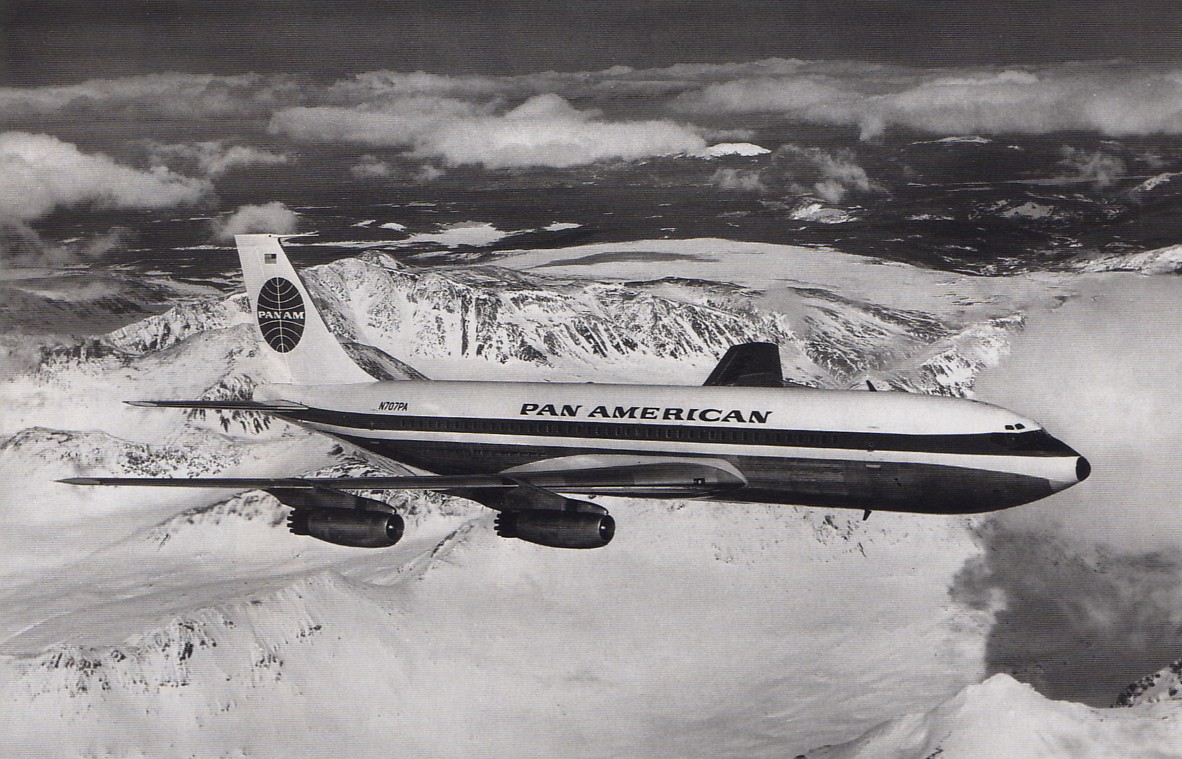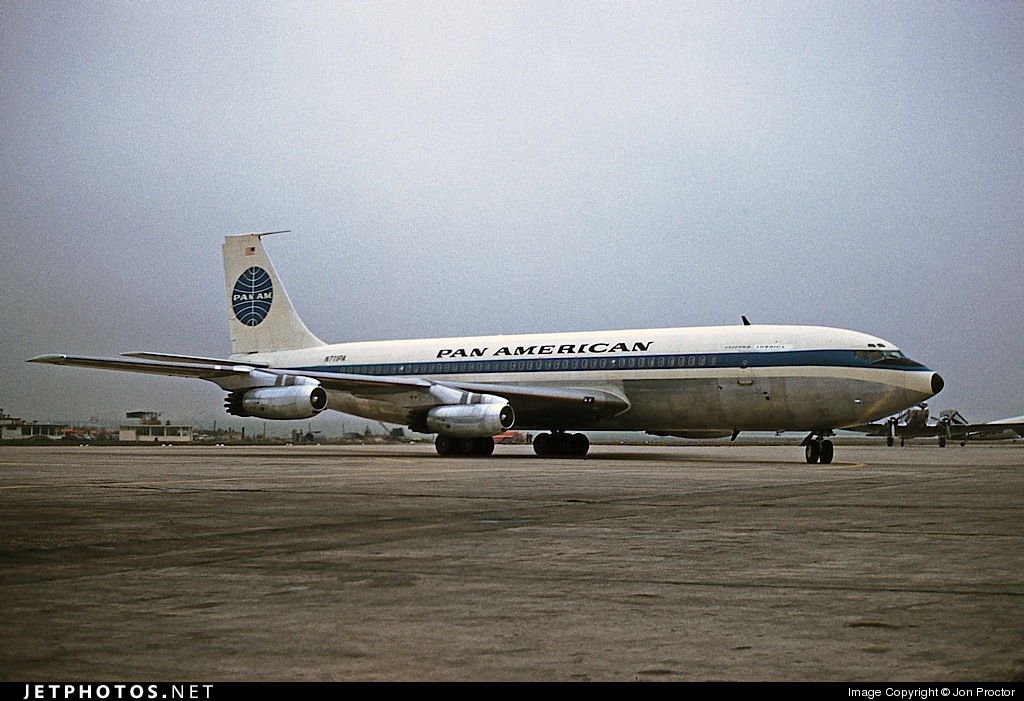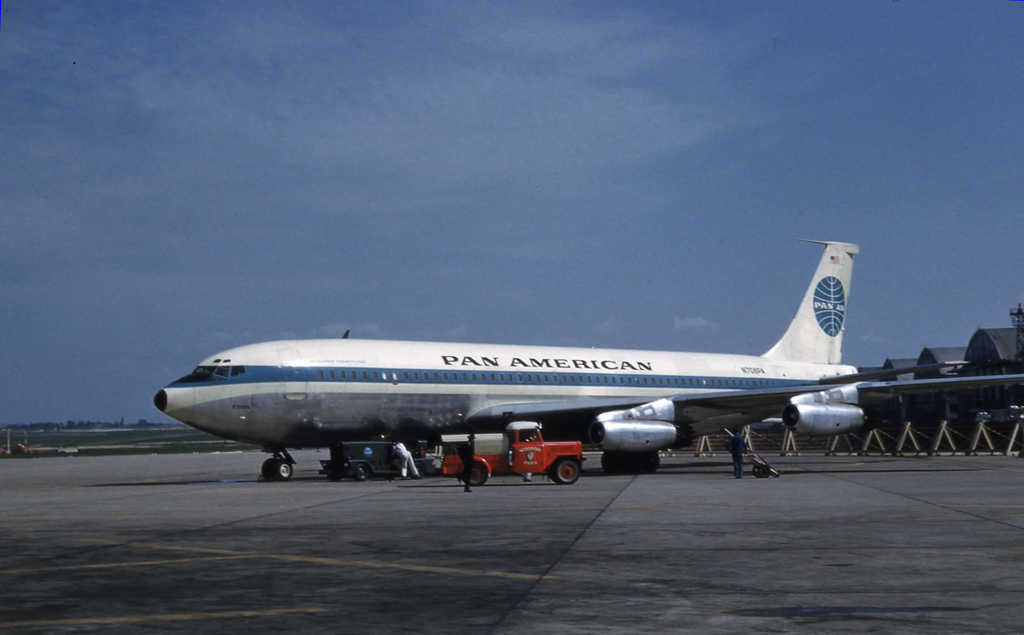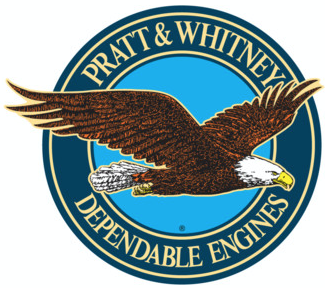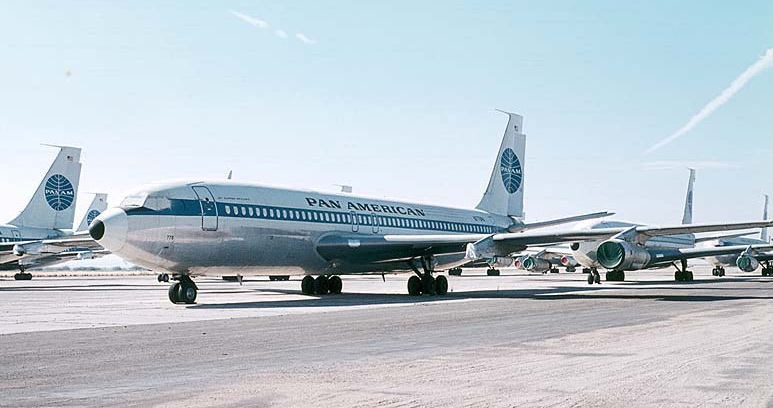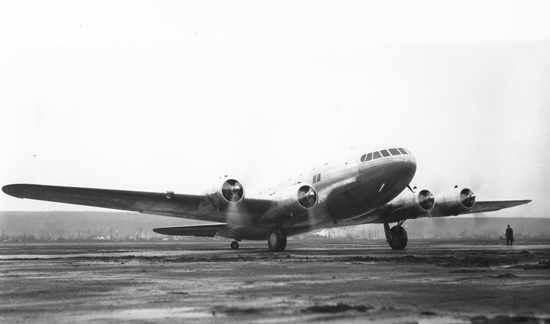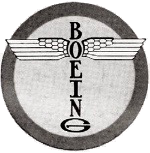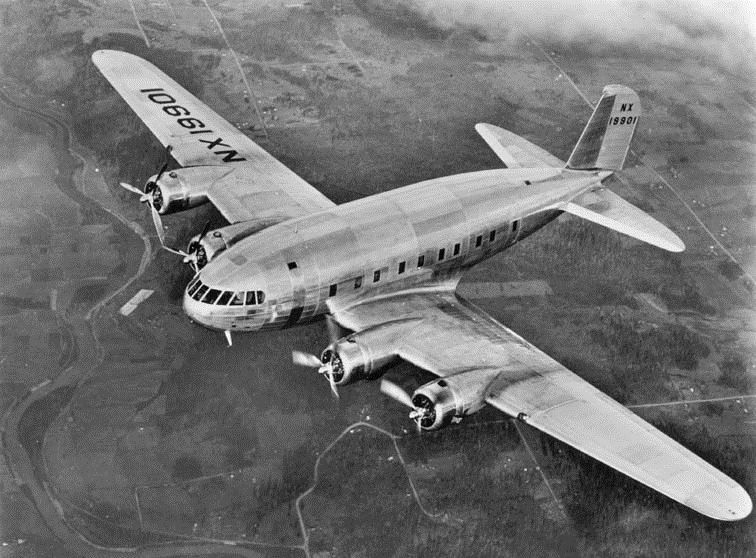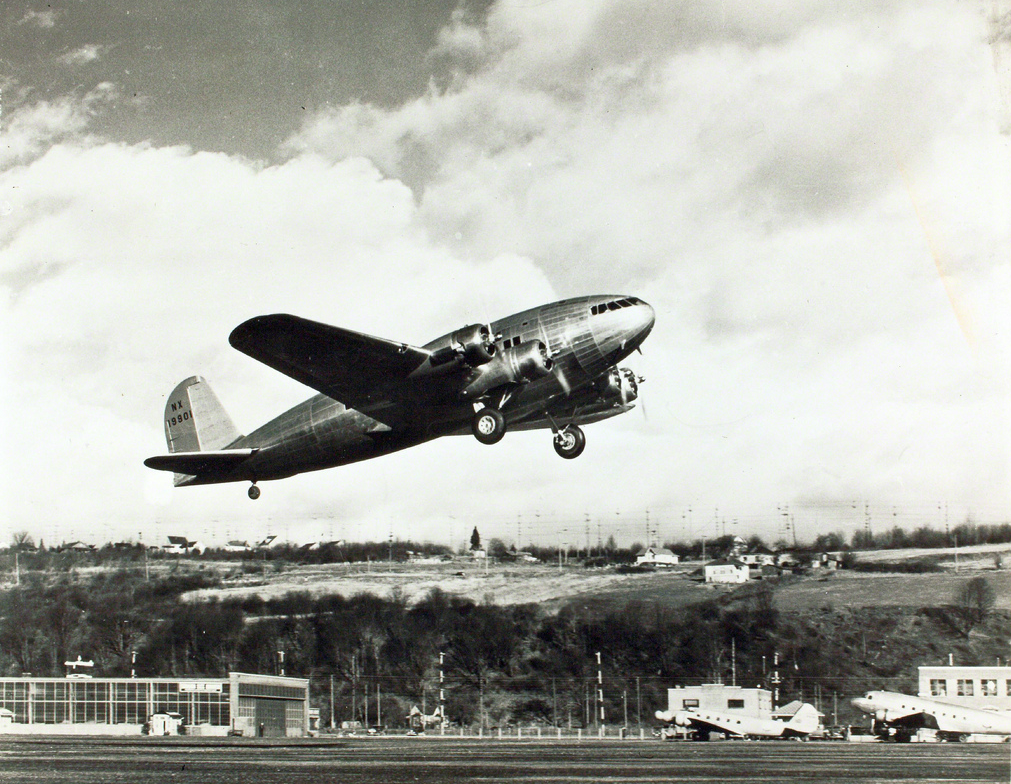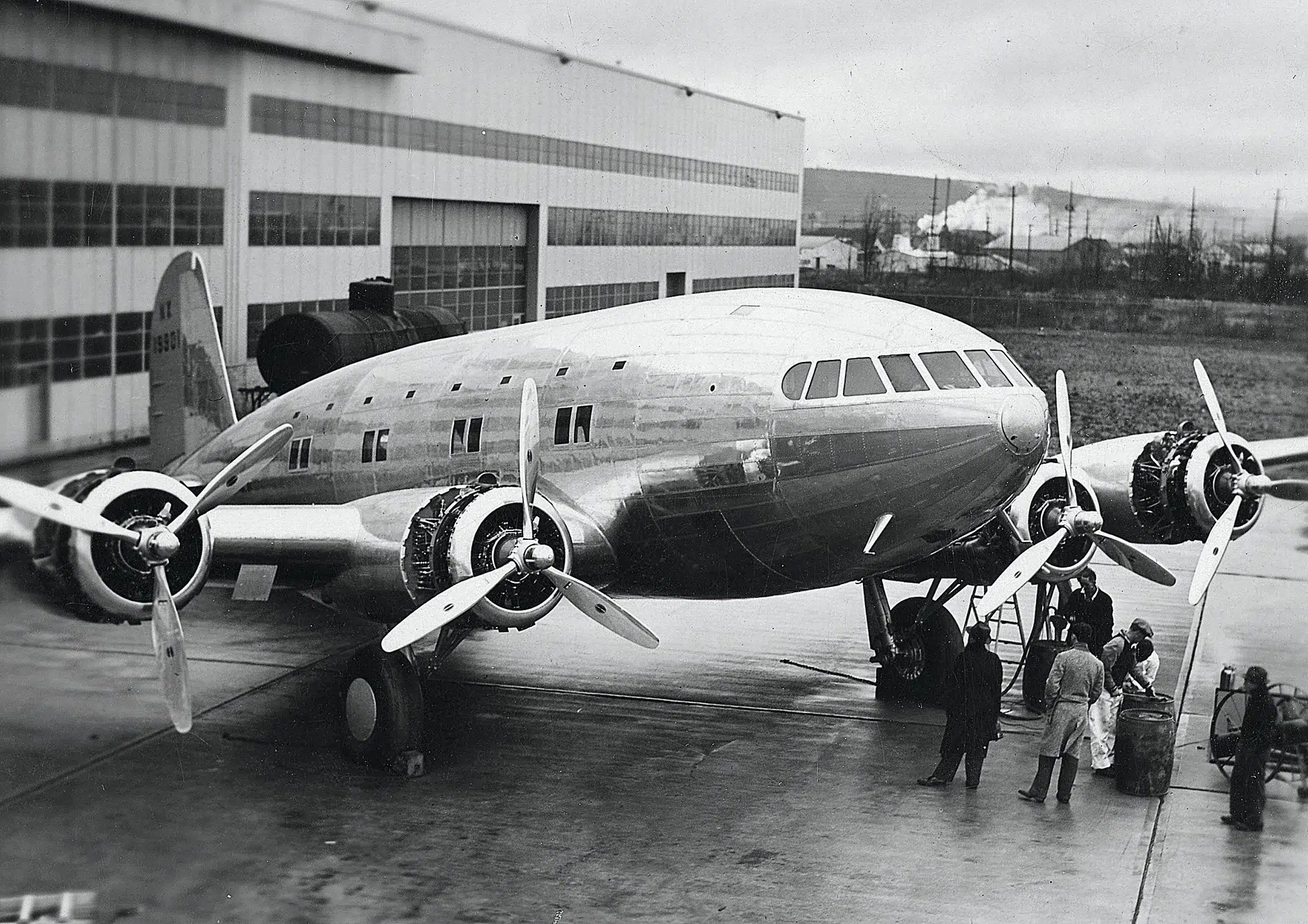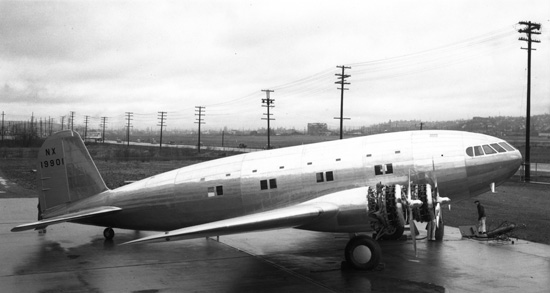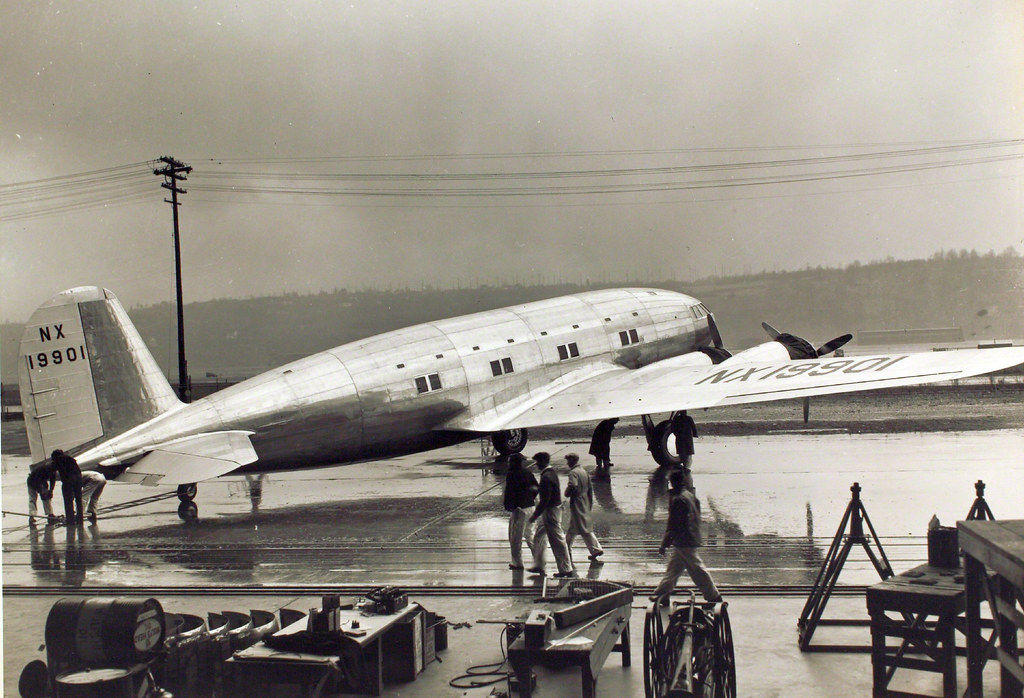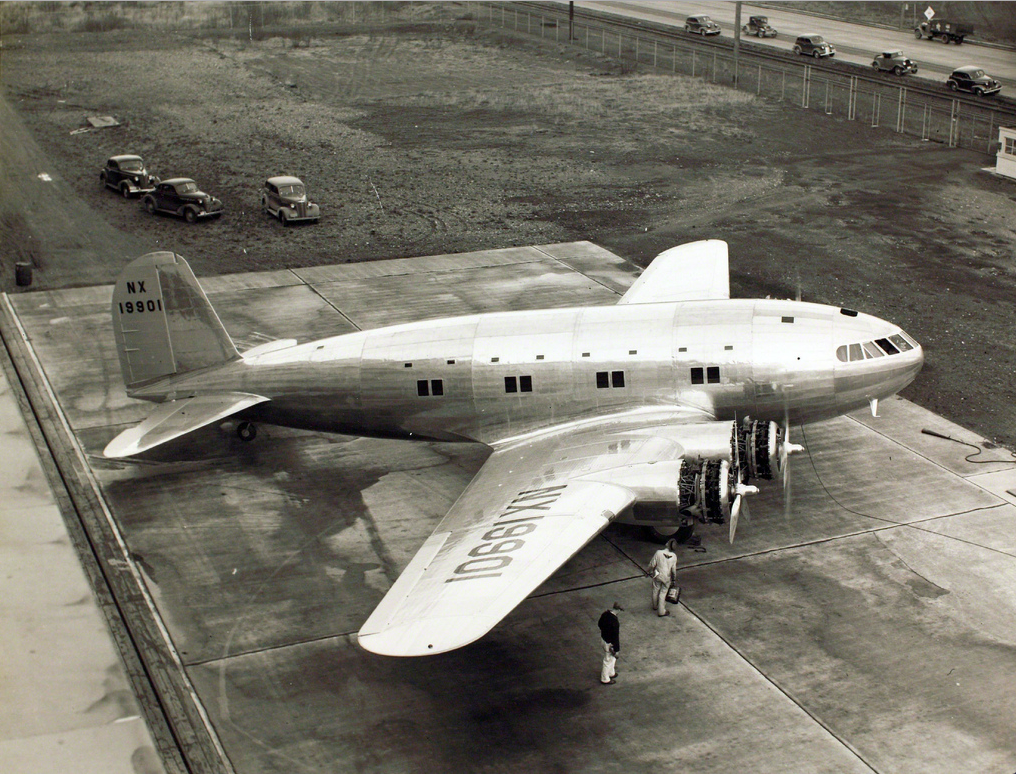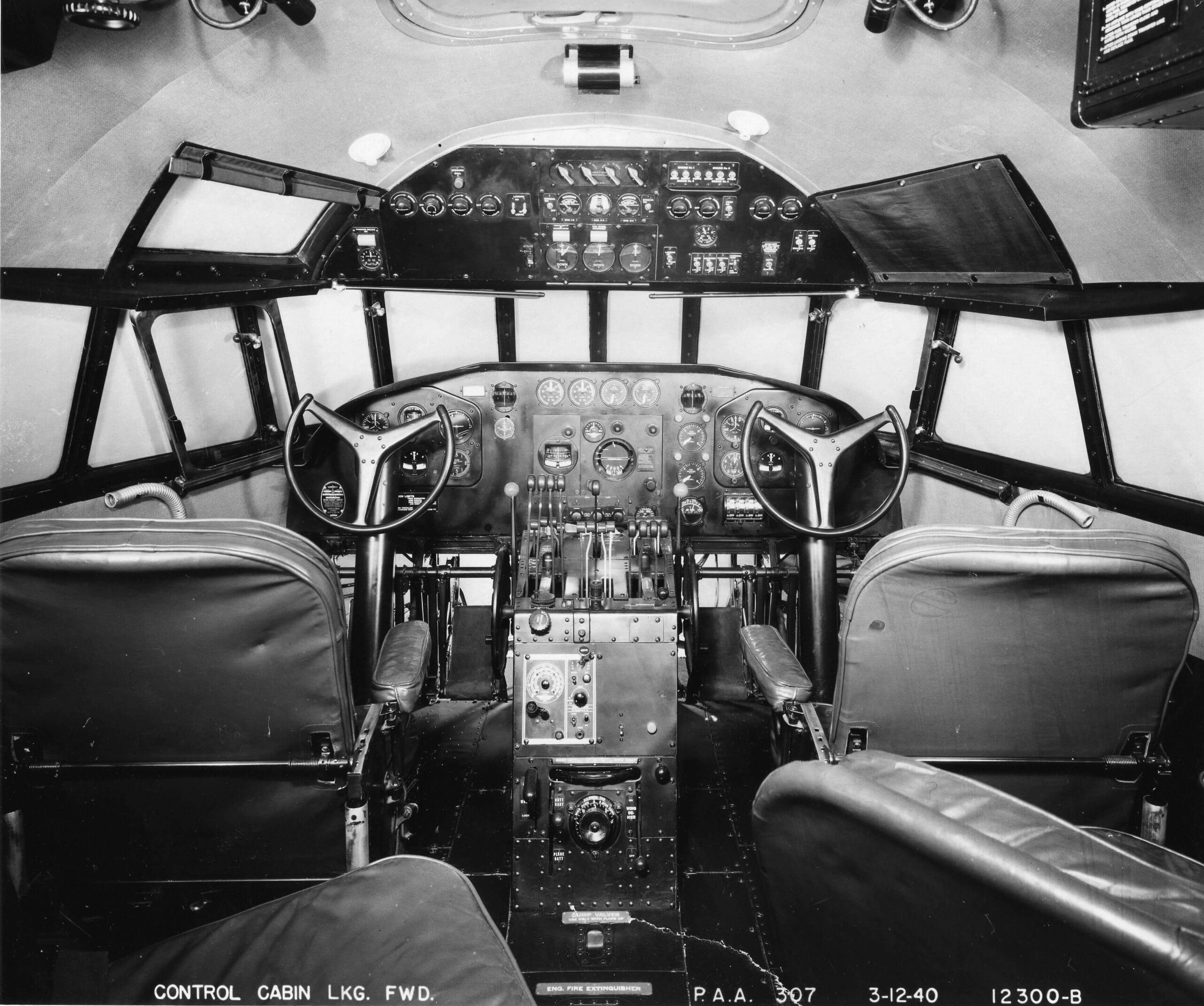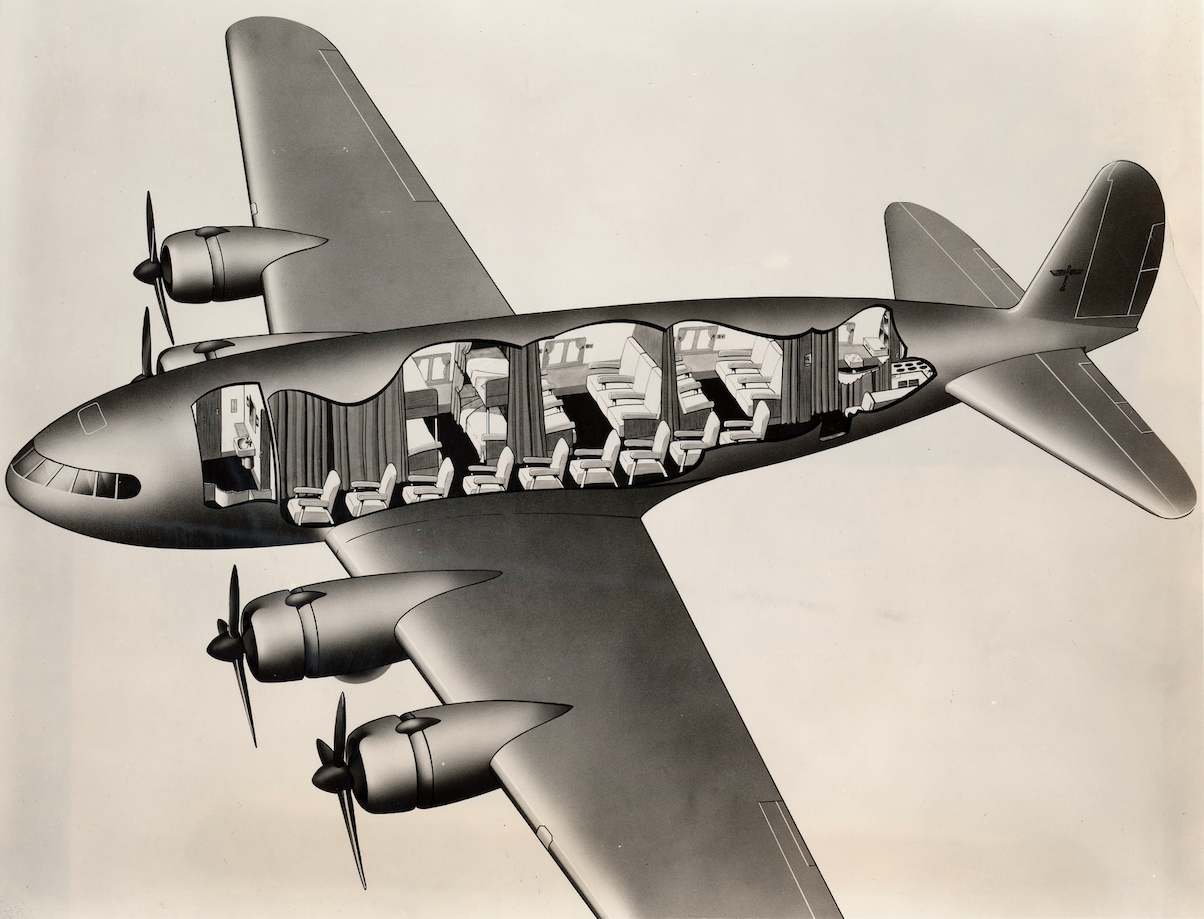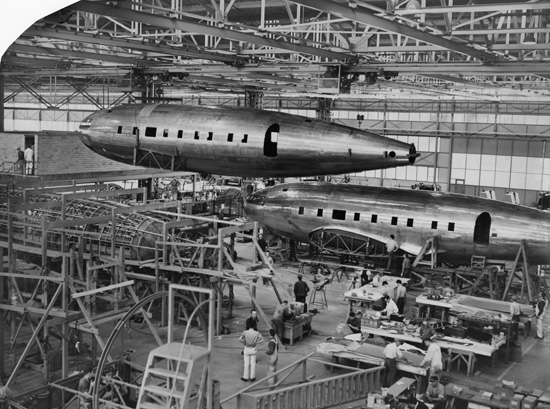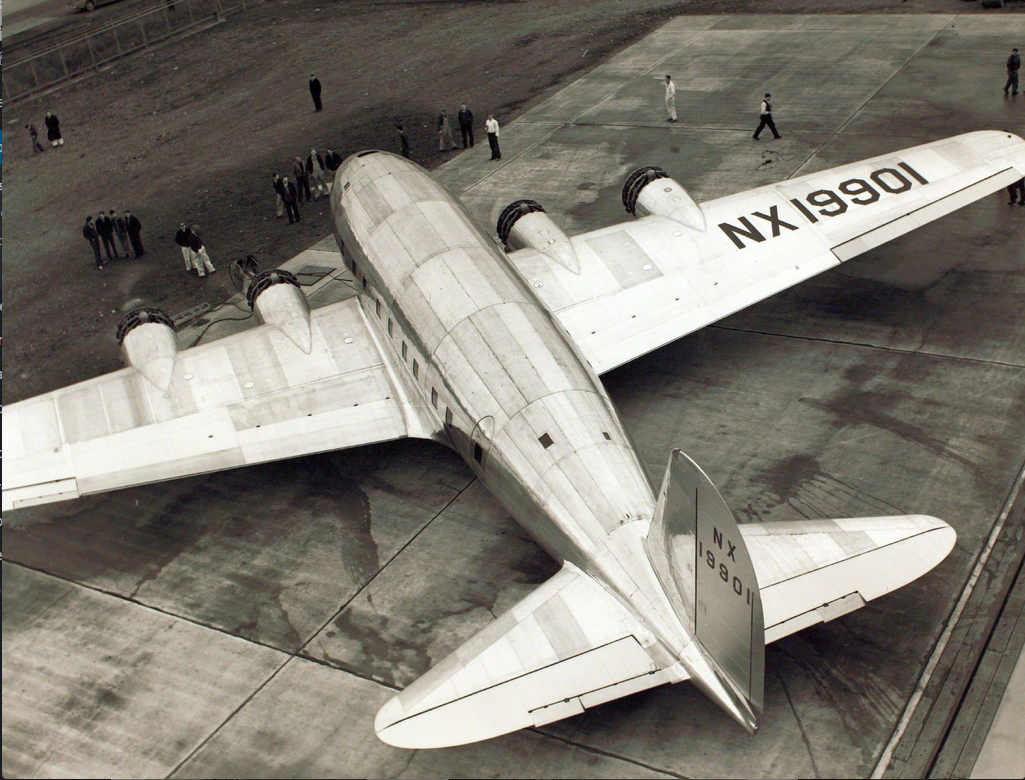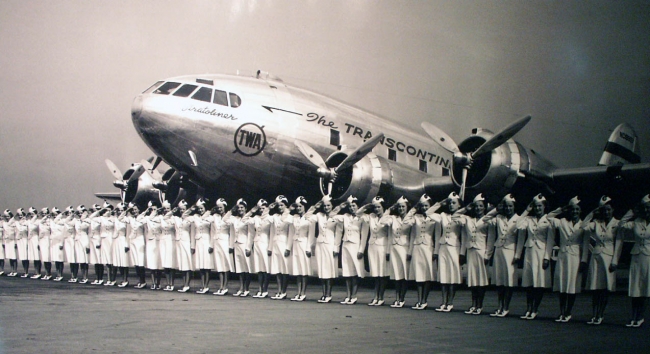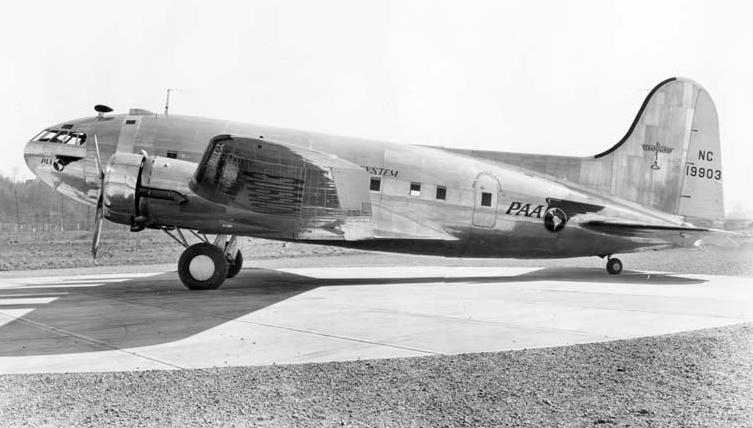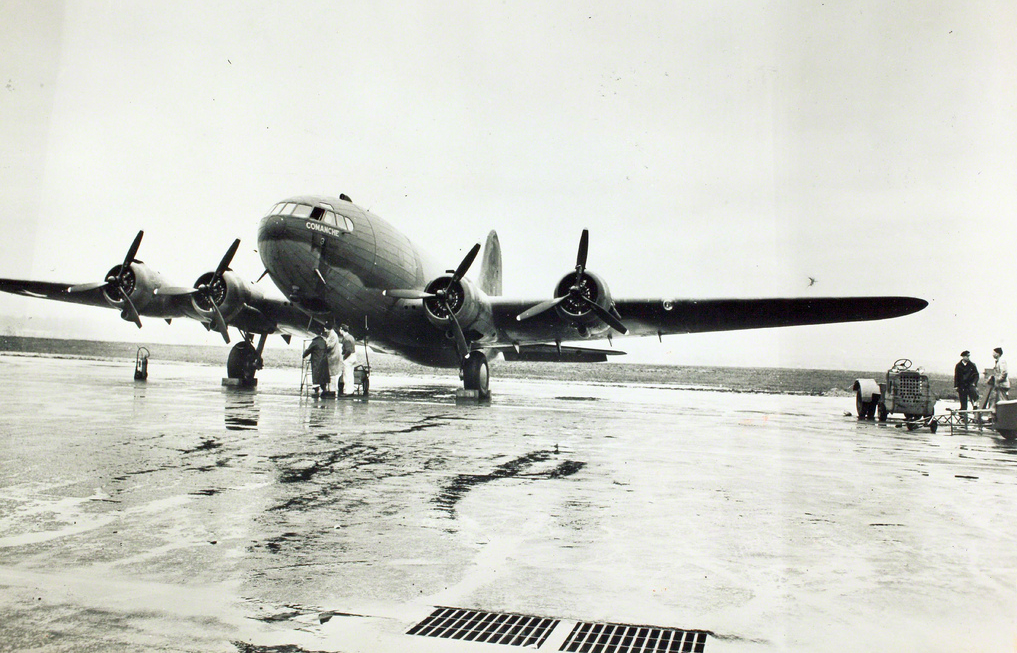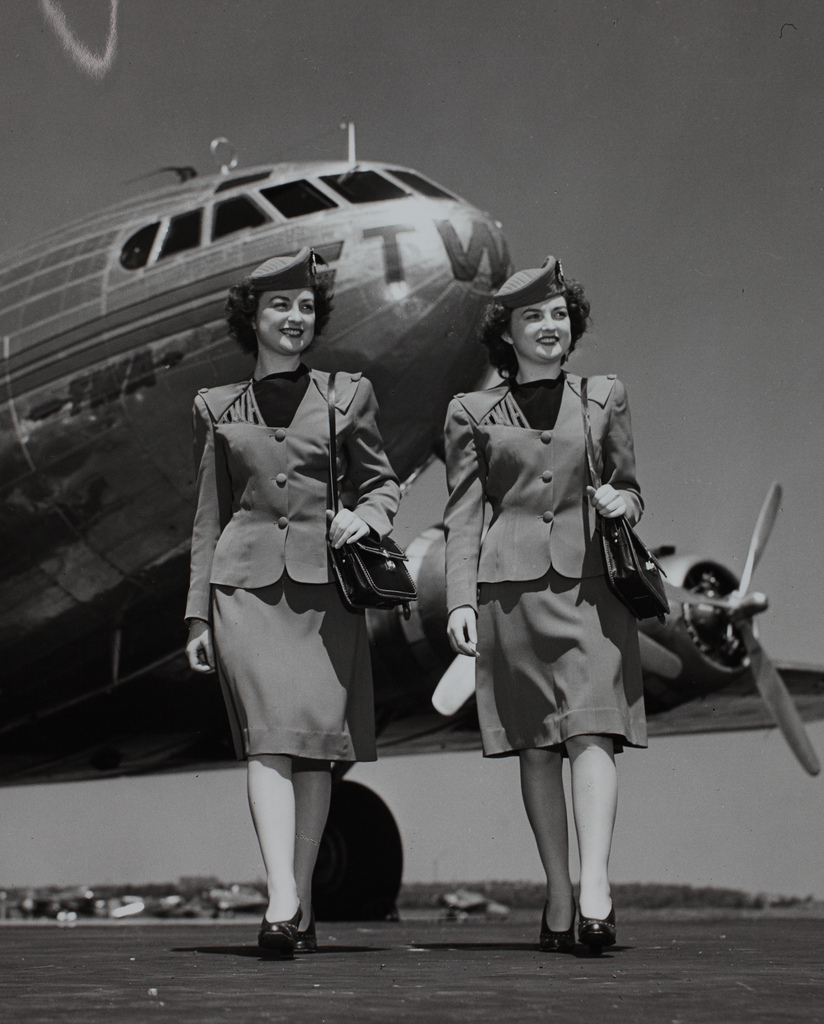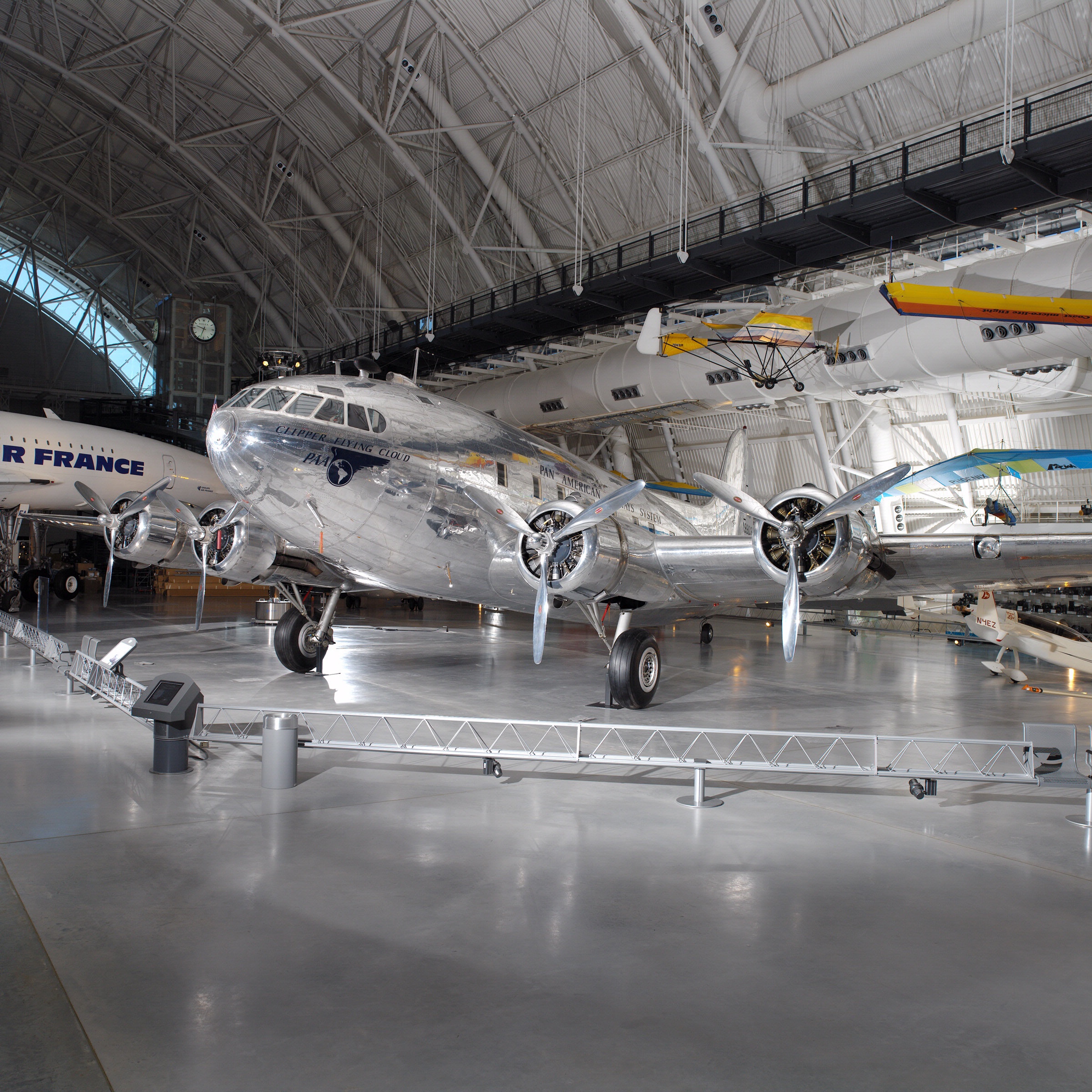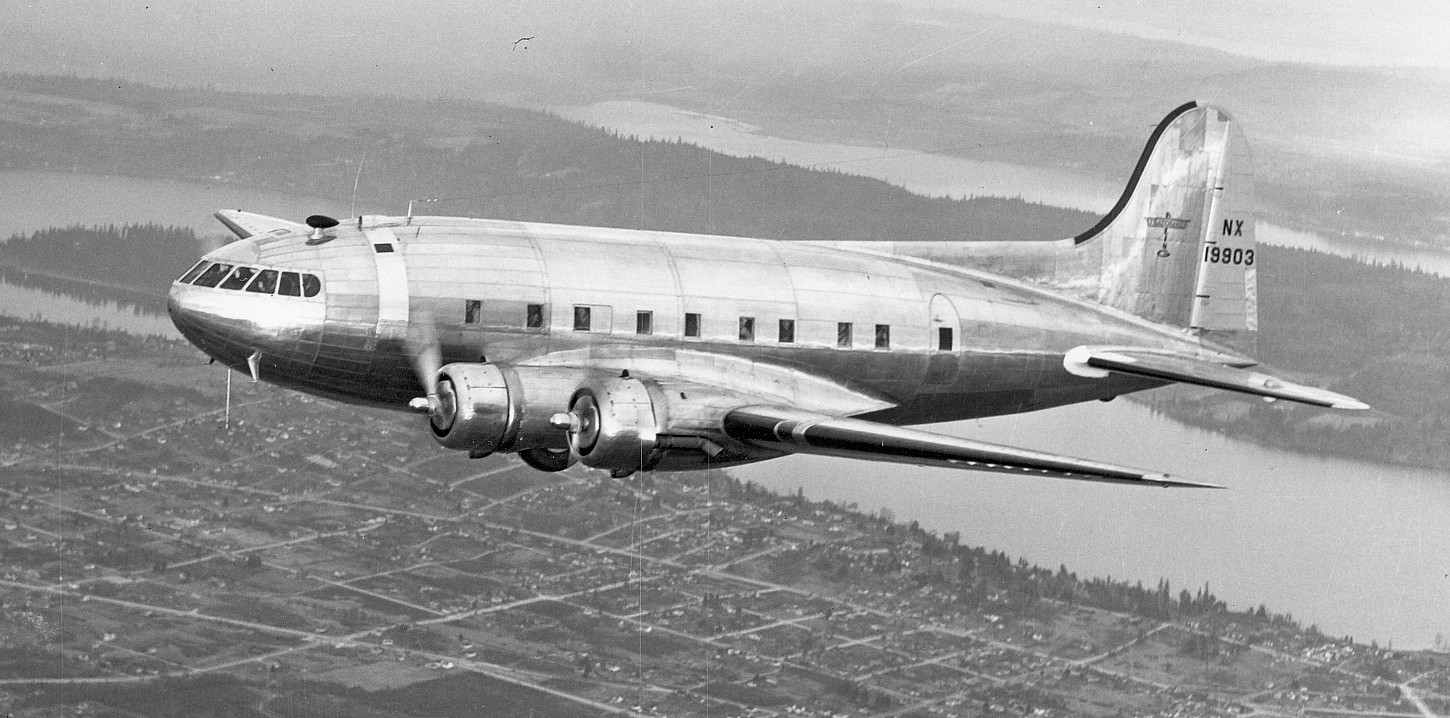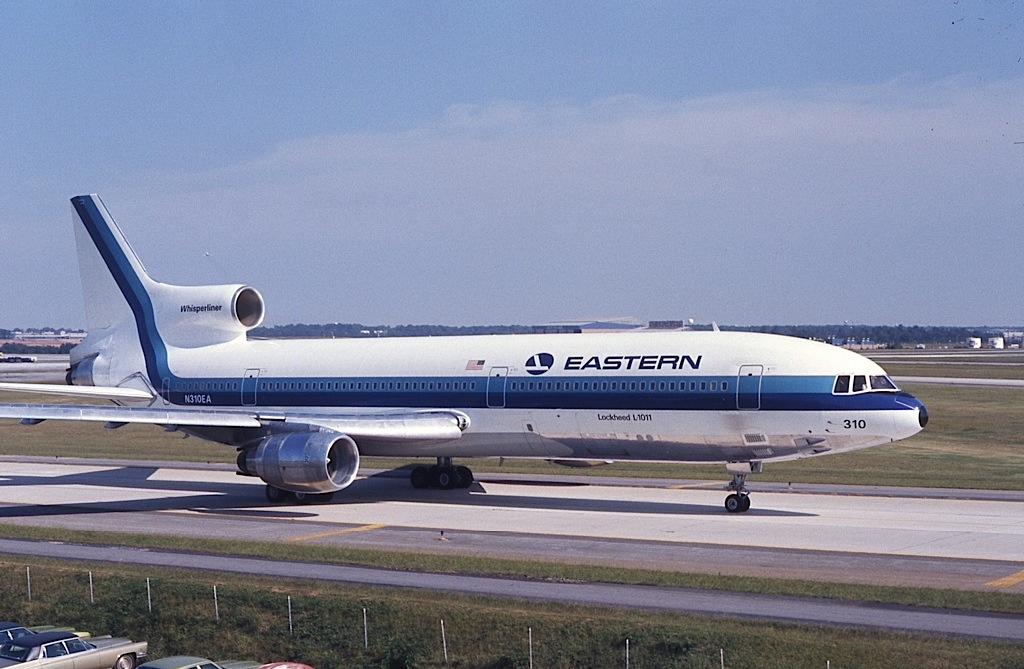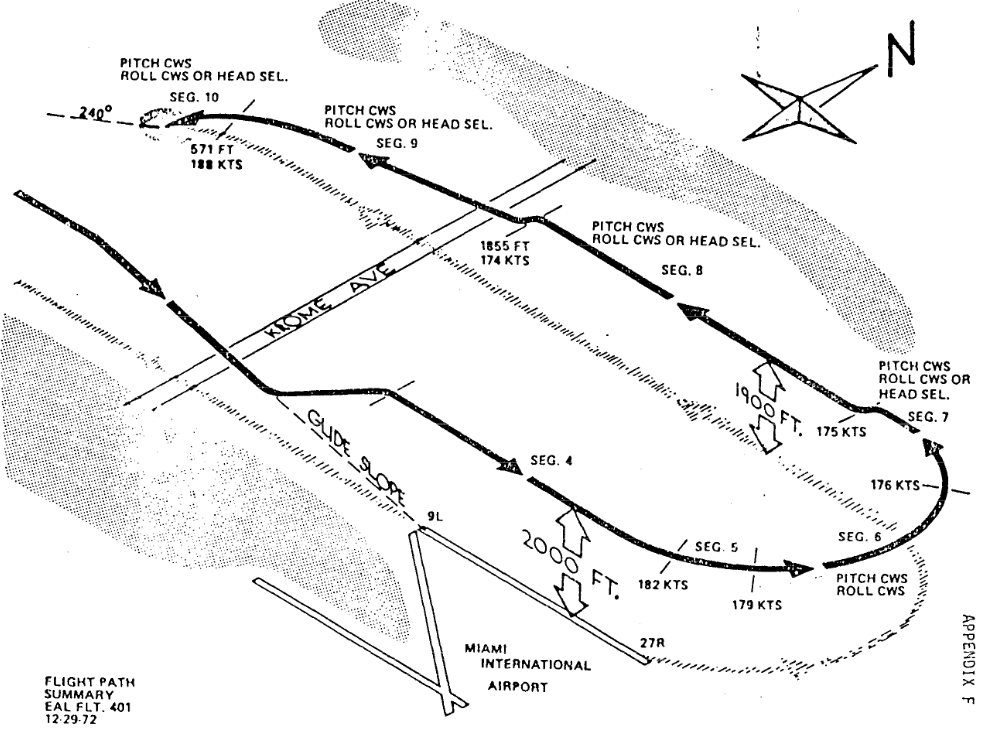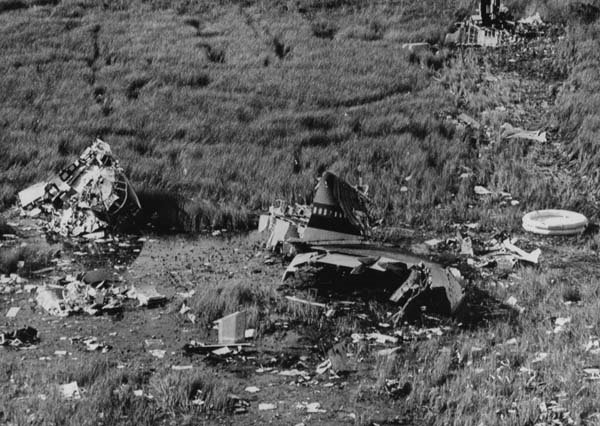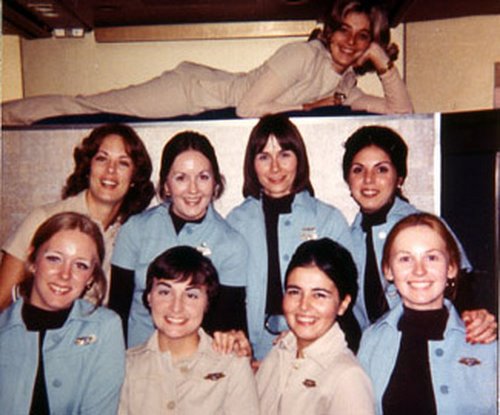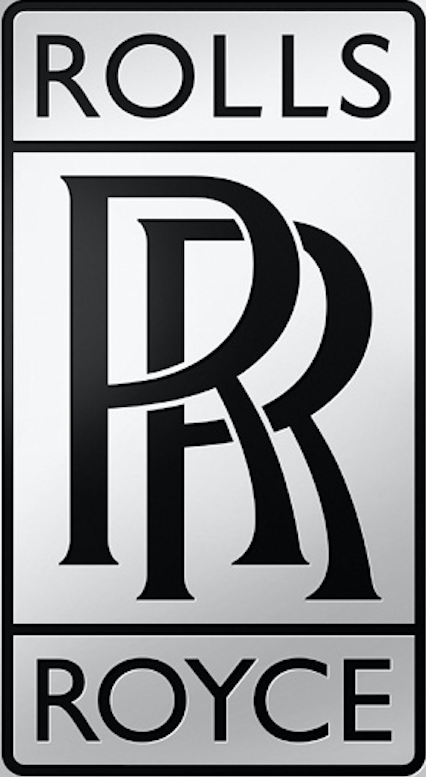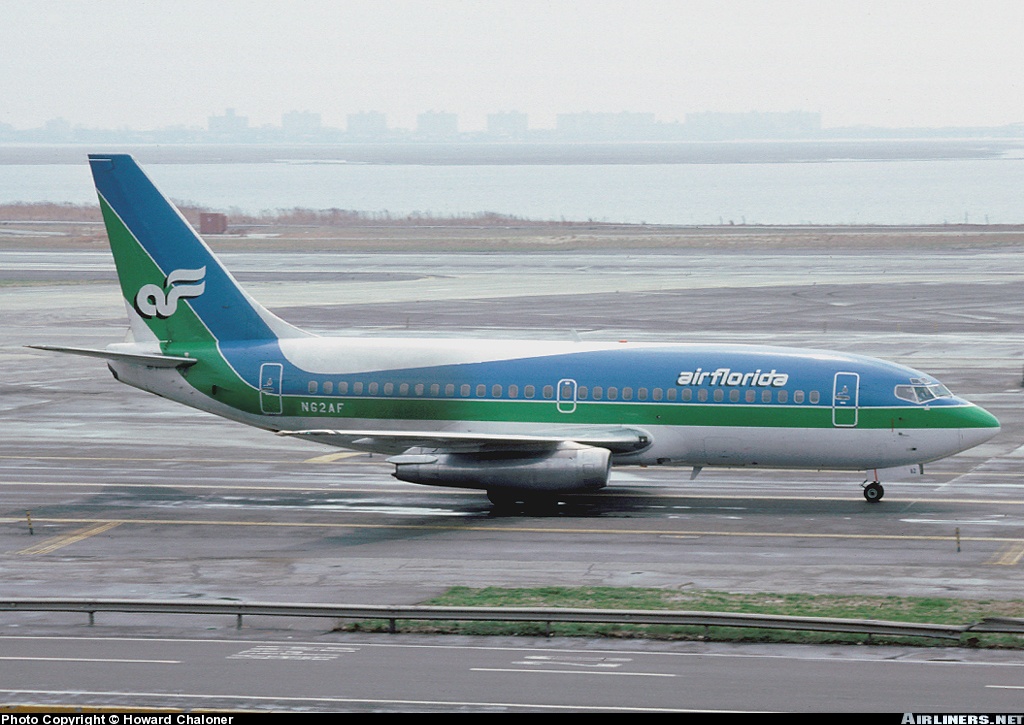
 13 January 1982: At 3:59 p.m. Eastern Standard Time (20:59 UTC), Air Florida Flight 90, a Boeing 737-222, registration N62AF, s/n 19556, began its takeoff roll at Washington National Airport (DCA). The airliner, with a flight crew of two and three cabin attendants, carried 74 passengers en route Fort Lauderdale, Florida, with an intermediate stop at Tampa.
13 January 1982: At 3:59 p.m. Eastern Standard Time (20:59 UTC), Air Florida Flight 90, a Boeing 737-222, registration N62AF, s/n 19556, began its takeoff roll at Washington National Airport (DCA). The airliner, with a flight crew of two and three cabin attendants, carried 74 passengers en route Fort Lauderdale, Florida, with an intermediate stop at Tampa.
The departure was delayed 1 hour, 45 minutes when the airport closed due to a snowstorm. When the airport reopened, heavy snow was still falling.
Snow and ice had accumulated on the airliner’s wings and fuselage. The airplane had previously been de-iced but the flight crew elected not to repeat the procedure. Further, they did not activate the engine anti-ice system.
During the takeoff the engines were slow to accelerate and the airplane took much longer than normal to gain flight speed. Though it did become airborne, the 737 reached an altitude of just 352 feet (107 meters) when it stalled and struck the 14th Street Bridge, and then crashed into the Potomac River.
The airliner broke through the ice covering the river and sank. There were only five survivors.
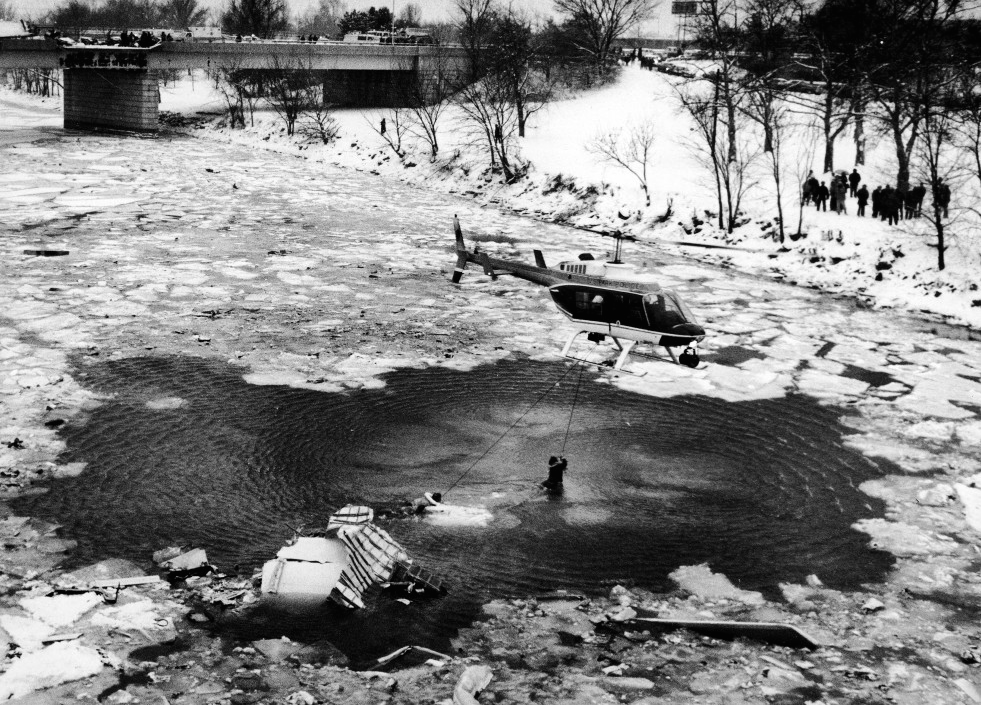
In addition to those who died aboard the 737, four persons on the 14th Street Bridge were killed when the airliner struck their cars.
Many people who witnessed the crash tried to help the survivors by going in to the freezing water to reach them.
 The U.S. Park Police responded with a 1979 Bell 206L-1 LongRanger II helicopter, Eagle 1, (N22PP, serial number 45287) flown by Officers Donald W. Usher and Melvin E. Windsor. The pilot, Don Usher, hovered low, sometimes with the skids of the helicopter in the water, while Gene Windsor tried to reach the survivors.
The U.S. Park Police responded with a 1979 Bell 206L-1 LongRanger II helicopter, Eagle 1, (N22PP, serial number 45287) flown by Officers Donald W. Usher and Melvin E. Windsor. The pilot, Don Usher, hovered low, sometimes with the skids of the helicopter in the water, while Gene Windsor tried to reach the survivors.
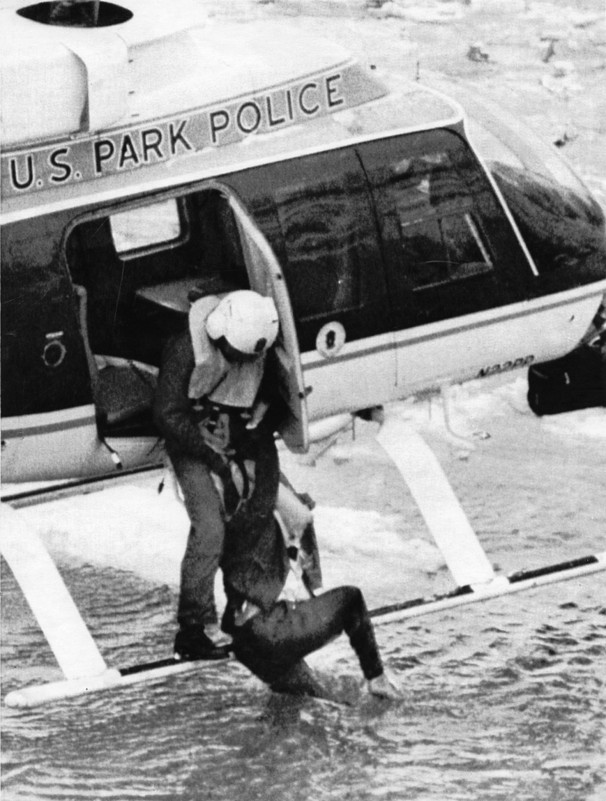
A passenger in the water, Arland D. Williams, Jr., twice caught lines that had been lowered from the helicopter, but in both cases, he passed them to others in the water:
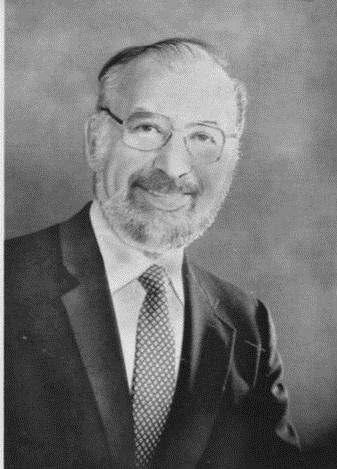
“He was about 50 years old, one of half a dozen survivors clinging to twisted wreckage bobbing in the icy Potomac when the first helicopter arrived. To the copter’s two-man Park Police crew he seemed the most alert. Life vests were dropped, then a flotation ball. The man passed them to the others. On two occasions, the crew recalled last night, he handed away a lifeline from the hovering machine that could have dragged him to safety. The helicopter crew who rescued five people, the only persons who survived from the jetliner, lifted a woman to the riverbank, then dragged three more persons across the ice to safety. Then the lifeline saved a woman who was trying to swim away from the sinking wreckage and the helicopter pilot, Donald W. Usher, returned to the scene but the man was gone.”
— “A Hero – Passenger Aids Others, Then Dies.” The Washington Post, January 14, 1982.
“So the man in the water had his own natural powers. He could not make ice storms, or freeze the water until it froze the blood. But he could hand life over to a stranger, and that is a power of nature too. The man in the water pitted himself against an implacable, impersonal enemy; he fought it with charity; and he held it to a standoff. He was the best we can do.”
— Rosenblatt, R., “The Man in the Water,” Time Magazine, January 25, 1982
Probable Cause
The National Transportation Safety Board determines that the probable cause of this accident was the flightcrew’s failure to use engine anti-ice during ground operation and takeoff, their decision to takeoff with snow/ice on the airfoil surfaces of the aircraft, and the captain’s failure to reject the takeoff during the early stage when his attention was called to anomalous engine instrument readings. Contributing to the accident were the prolonged ground delay between deicing and the receipt of ATC takeoff clearance during which the airplane was exposed to continual precipitation, the known inherent pitchup characteristics of the B-737 aircraft when the leading edge is contaminated with even small amounts of snow or ice, and the limited experience of the flightcrew in jet transport winter operations.
— NATIONAL TRANSPORTATION SAFETY BOARD AIRCRAFT ACCIDENT REPORT NTSB-AAR-82-8, 10 August 1982, Section 3.2 at Page 82
The National Transportation Safety Board also wrote, “The Safety Board commends the heroic actions of the helicopter pilot and crewman who participated in the rescue effort.”

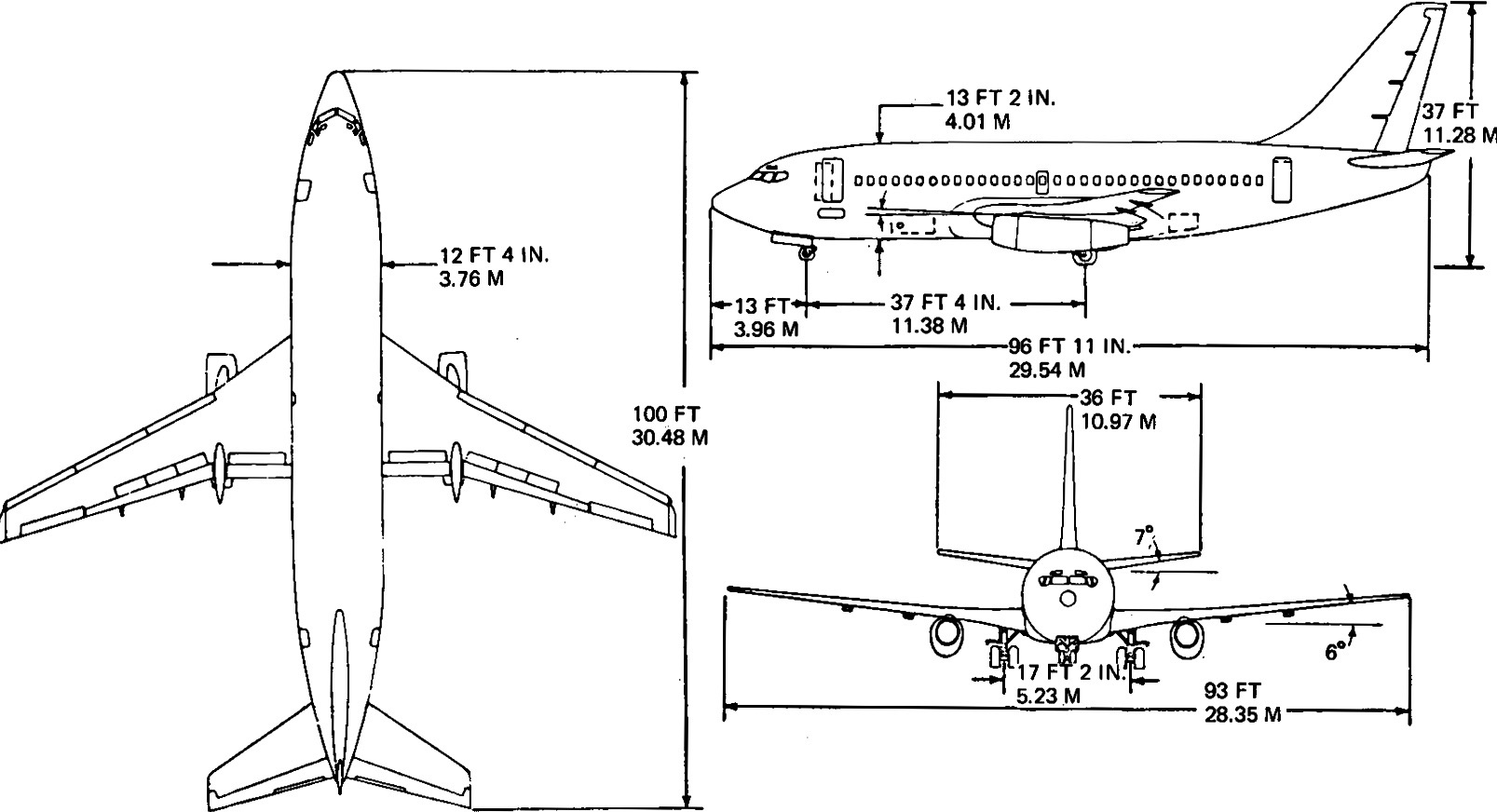
![]() The Boeing 737-200 series is a short-to-medium range narrow body twin-engine civil transport. It had a flight crew of two and could carry a maximum of 136 passengers.
The Boeing 737-200 series is a short-to-medium range narrow body twin-engine civil transport. It had a flight crew of two and could carry a maximum of 136 passengers.
The 737-200 is 100 feet, 2 inches (30.531 meters) long with a wingspan of 93 feet (28.346 meters) and overall height of 36 feet, 10 inches (11.227 meters). Its empty weight is 69,700 pounds (31,615 kilograms) and maximum takeoff weight is 115,500 pounds (52,390 kilograms).
The airliner is powered by two Pratt & Whitney JT8D-9A low-bypass axial-flow turbofan engines, each producing 14,500 pounds of thrust (64.499 kilonewtons) at Sea Level. JT8D-9A was a two-spool engine with a 2-stage fan section, 11-stage compressor (4 low- and 7 high-pressure stages), nine combustion chambers and a 4-stage turbine (1 high- and 3 low-pressure stages). The JT8D-9A was 42.5 inches (1.080 meters) in diameter, 123.5 inches (3.137 meters) long, and weighed 3,196 pounds (1,450 kilograms).
Maximum speed of the 737-200 is 0.82 Mach (544 miles per hour/780 kilometers per hour) and the service ceiling is 35,000 feet (10,700 meters).
The 737-200 first flew 8 August 1967. 1,095 –200s were built. The last one in service with an American airline, Aloha Airlines, was retired 21 March 2008.
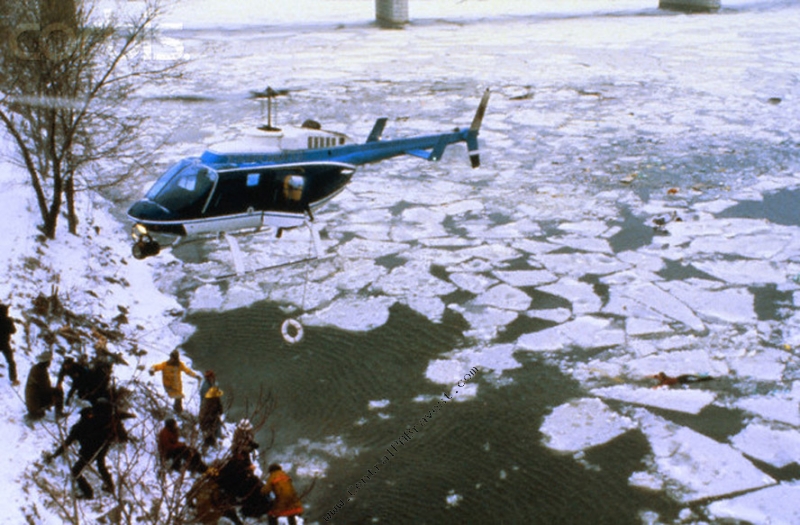
![]() The Bell Helicopter Company Model 206L-1 LongRanger II is a 7-place light helicopter developed from the earlier 5-place Model 206B JetRanger series. It is designed to be flown by a single pilot in the right front seat, and is certified for Visual Flight Rules.
The Bell Helicopter Company Model 206L-1 LongRanger II is a 7-place light helicopter developed from the earlier 5-place Model 206B JetRanger series. It is designed to be flown by a single pilot in the right front seat, and is certified for Visual Flight Rules.
The 206L-1 is 42 feet, 8 inches (13.005 meters) long, overall, and the two-bladed main rotor is semi-rigid and under-slung, a common feature of Bell’s main rotor design. It has a diameter of 37 feet (11.278 meters) and turns counter-clockwise (seen from above) at 395 r.p.m. (100% NR). (The advancing blade is on the helicopter’s right side.) The rotor blade has a chord of 1 foot, 1.0 inches (0.330 meter) and 11° negative twist. The blade tips are swept.
The two-bladed tail rotor assembly is also semi-rigid and is positioned on the left side of the tail boom in a pusher configuration. It turns clockwise, as seen from the helicopter’s left. (The advancing blade is below the axis of rotation.) The tail rotor diameter is 5 feet, 6.0 inches (1.676 meters).
The LongRanger II is powered by an Allison 250-C28B turboshaft engine. This engine produces 500 shaft horsepower but is de-rated to the limit of the main transmission, 435 horsepower at 104% N1 (52,980 r.pm.). The engine is mounted above the roof of the fuselage, to the rear of the main transmission. Output shafts lead forward to the transmission and aft to the tail rotor 90° gear box. The transmission and rotor mast are mounted angled slightly forward and to the left. This assists in the helicopter’s lift off to a hover, helps to offset its translating tendency, and keeps the passenger cabin in a near-level attitude during cruise flight.
A vertical fin is attached at the aft end of the tail boom. The fin is offset 4° to the right to unload the tail rotor in cruise flight. Fixed horizontal stabilizers with an inverted asymmetric airfoil are attached to the tail boom. In cruise flight, these provide a downward force that keeps the passenger cabin in a near-level attitude. Vertical fins are attached to the outboard ends of the horizontal stabilizers and above the tailboom centerline. The fins are slightly offset to the left and counteract the helicopter’s Dutch roll tendency.
The helicopter has an empty weight of approximately 2,160 pounds (979 kilograms), depending on installed equipment, and the maximum gross weight is 4,050 pounds (1,836 kilograms).
The LongRanger II has a maximum speed, VNE, of 150 miles per hour (241 kilometers per hour) up to 3,000 feet (914 meters). Its best rate of climb, VY, is at 60 miles per hour (97 kilometers per hour) and best speed in autorotation (minimum rate of descent and maximum distance) is at 80 miles per hour (129 kilometers per hour), resulting in a glide ratio of about 4:1.
The Model 206L LongRanger first flew in 1974 and the 206L-1 LongRanger II variant entered production in 1978. It was replaced several years later by the 206L-3. The LongRanger remains in production as the Model 206L-4.
Bell 206L-1 LongRanger II serial number 45287 was issued an Airworthiness Certificate 17 August 1979. N22PP was transferred to the Department of the Interior, Northwest Region, at Boise, Idaho, in April 1998 and re-registered N613. At Mesa Verde National Park, Colorado, 30 October 2000, N613 was substantially damaged when its tail rotor blades failed due to improper manufacturing techniques. (NTSB Report DEN01LA012) The helicopter was repaired and returned to service. Its engine had been upgraded to an Allison 250-C30P. The helicopter’s FAA registration was cancelled 10 October 2014.
Restored to its original colors in 2016, Eagle One was placed on display at the National Law Enforcement Museum in Washington, D.C.
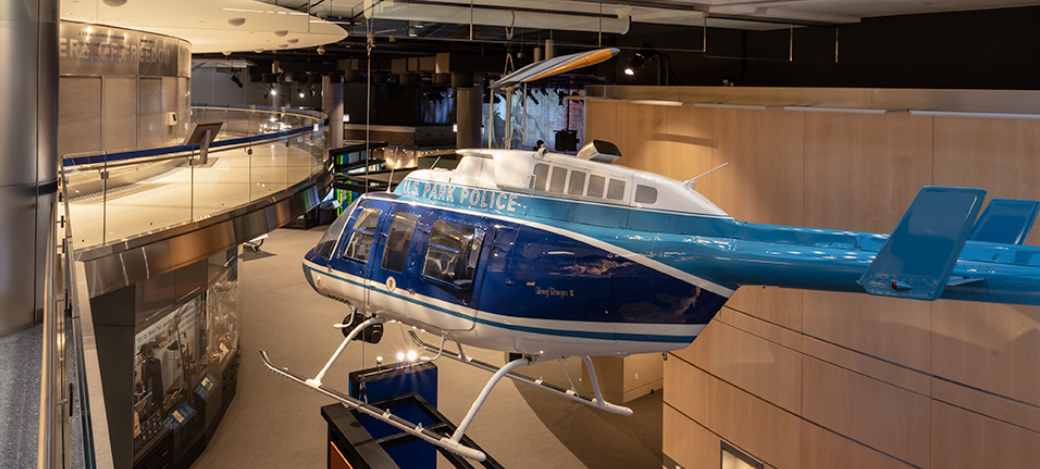
© 2021, Bryan R. Swopes
